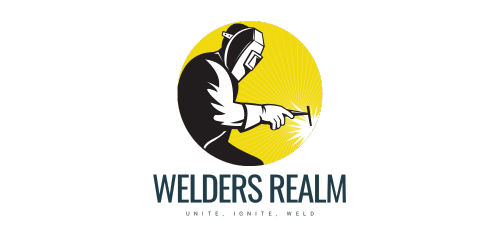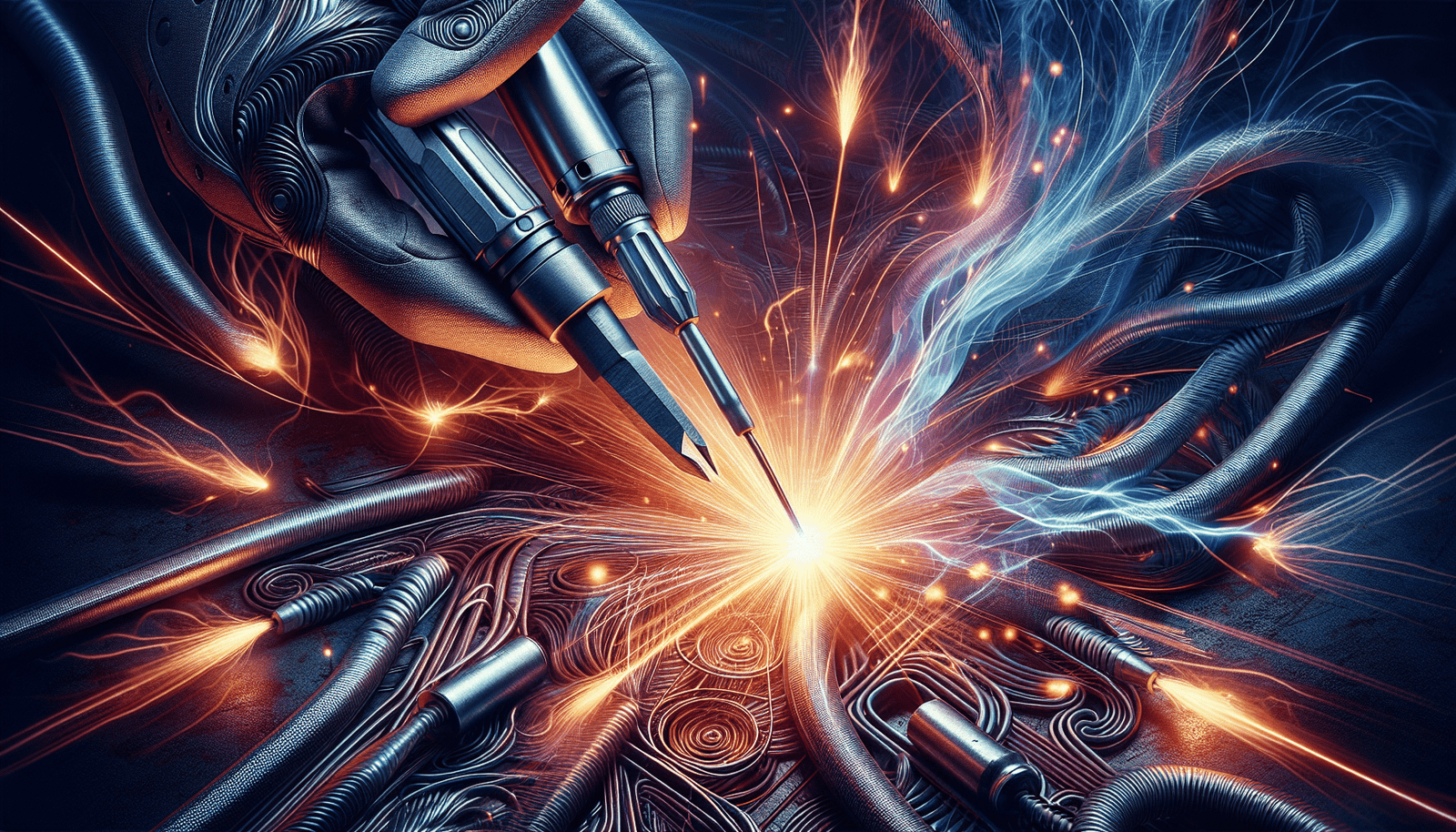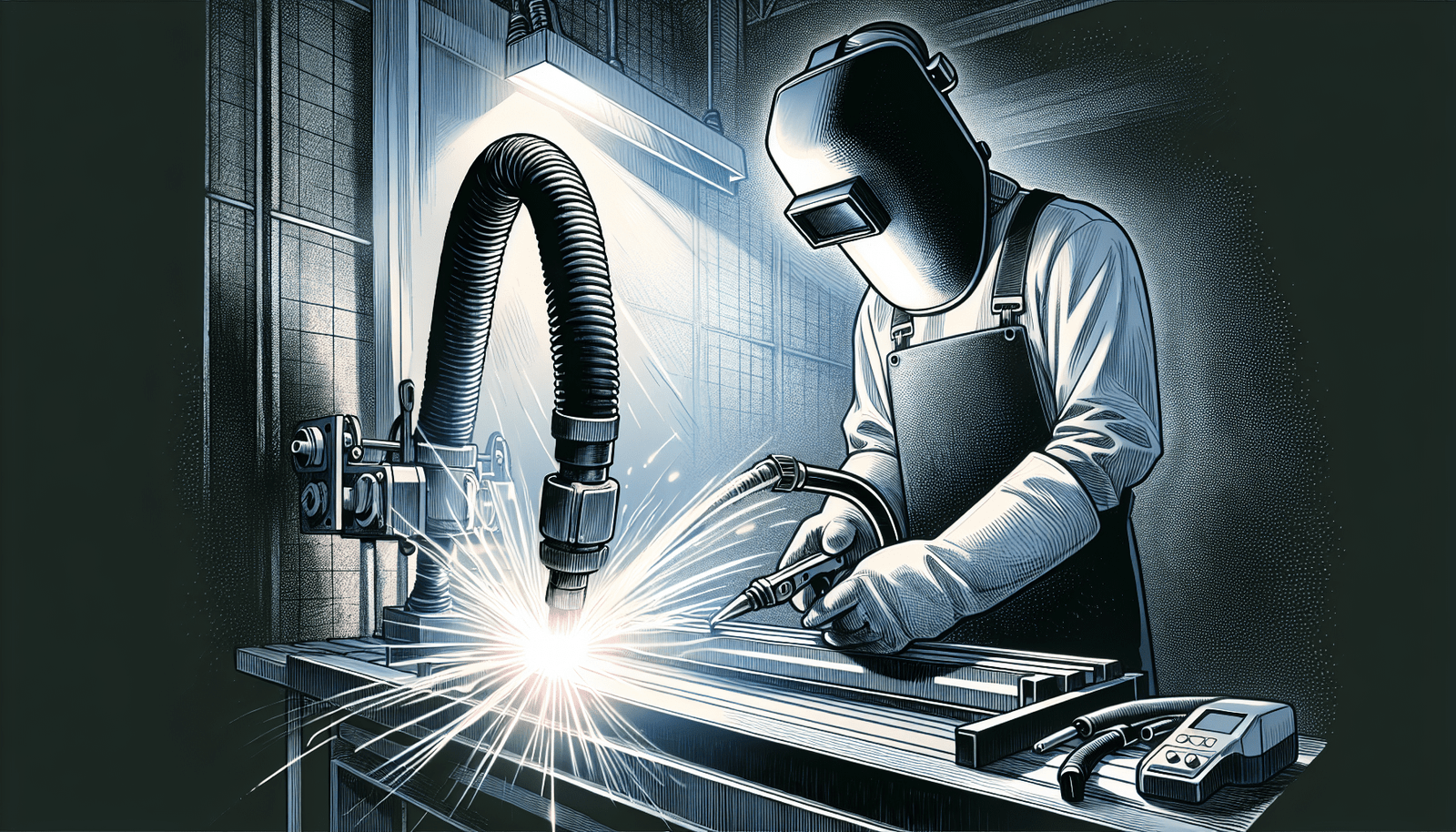If you’re a truck owner, you know that wear and tear on your truck bed is inevitable. Whether it’s scratches, dents, or even rust, these damages can not only affect the appearance of your beloved truck but also its functionality. That’s where welding techniques for truck bed repairs come into play. In this article, we will explore common welding techniques that can help you restore your truck bed to its former glory. From MIG welding to spot welding, we’ll delve into the different options available and discuss their pros and cons. So buckle up and get ready to learn how you can tackle those pesky truck bed repairs like a welding guru!
Essential Tools for Welding
When it comes to welding, having the right tools is crucial for a successful and safe welding experience. Here are some essential tools that every welder should have:
Welding Machine
The welding machine is the heart of any welding operation. It provides the heat and electricity needed to melt the metal and create a strong weld. There are different types of welding machines available, such as MIG welders, TIG welders, and stick welders. Each type has its own advantages and is suited for different welding applications.
Welding Helmet
A welding helmet is a necessary safety gear for any welder. It protects your face and eyes from the intense heat, UV rays, and sparks generated during the welding process. It is important to choose a helmet that provides adequate protection and fits comfortably on your head. Look for helmets with adjustable settings and a clear lens for better visibility.
Welding Gloves
Welding gloves are designed to protect your hands from burns, sparks, and other potential hazards associated with welding. They are made of flame-resistant materials and provide good dexterity for handling welding equipment. It is important to choose gloves that fit well and have reinforced palms for added protection.
Chipping Hammer
A chipping hammer is a handheld tool that is used to remove slag, spatter, and other impurities from the surface of the weld. It has a pointed end for chipping away at the weld and a flat end for cleaning the surface. A chipping hammer is essential for achieving a clean and smooth weld.
Wire Brush
A wire brush is another tool that is used for cleaning the surface of the weld. It is used to remove rust, paint, and dirt from the metal before welding. It is important to have a clean surface before welding to ensure a strong and durable weld.
Angle Grinder
An angle grinder is a versatile tool that can be used for various tasks in welding. It is used for grinding and cutting metal, as well as for removing welding spatter and smoothing rough welds. It is important to choose an angle grinder with the right disc for the task at hand and to use it with caution.
Having these essential tools in your welding arsenal will not only make your welding job easier but also ensure your safety while working with hot metal and electricity.
Wire Feed Welding
Understanding Wire Feed Welding
Wire feed welding, also known as MIG welding, is a popular welding technique that uses a continuously fed electrode wire to join two pieces of metal together. The wire is fed through a welding gun, which also supplies the shielding gas to protect the weld from contamination. This process is known for its ease of use and versatility, making it suitable for a wide range of welding applications.
Benefits and Applications of Wire Feed Welding
Wire feed welding offers several benefits over other welding techniques. It provides a high deposition rate, allowing for faster welding speeds and increased productivity. It also offers good penetration, resulting in strong and durable welds. Wire feed welding is commonly used in automotive repair, fabrication, and general welding applications.
When to Use Wire Feed Welding in Truck Bed Repairs
Wire feed welding is often the preferred choice for repairing truck beds due to its ability to provide strong and reliable welds on thick metals. When repairing truck beds, it is important to use a wire feed welding technique that matches the thickness of the metal being welded. This ensures that the welds are strong enough to withstand the heavy loads and vibrations experienced by truck beds.
Stick Welding
An Overview of Stick Welding
Stick welding, also known as shielded metal arc welding (SMAW), is a welding technique that uses a consumable electrode coated in flux to create an arc between the electrode and the workpiece. The flux coating creates a shielding gas that protects the weld from atmospheric contamination. Stick welding is known for its versatility and ability to weld in various positions.
Pros and Cons of Stick Welding
Stick welding has several advantages. It is a relatively simple and cost-effective welding process, making it accessible to both professionals and hobbyists. Stick welding can be done in outdoor environments, as it is less affected by wind and draft compared to other welding techniques. However, stick welding requires more skill and practice to achieve high-quality welds compared to other techniques.
Use of Stick Welding In Truck Bed Repairs
Stick welding is commonly used in truck bed repairs due to its ability to weld thick metals and its versatility in various welding positions. It is especially useful for welding structural components of the truck bed, such as reinforcements and brackets. Stick welding provides reliable and durable welds that can withstand the harsh conditions and heavy loads experienced by truck beds.
Gas Metal Arc Welding (GMAW)
Introduction to Gas Metal Arc Welding (GMAW)
Gas Metal Arc Welding, also known as MIG welding, is a welding process that uses a continuously fed metal wire electrode and a shielding gas to create an electric arc between the electrode and the workpiece. This process is often preferred for its speed, ease of use, and ability to weld a variety of metals.
Advantages and Disadvantages of GMAW
Gas Metal Arc Welding offers several advantages. It provides high welding speeds and good penetration, resulting in efficient and strong welds. GMAW is also suitable for welding thin materials without causing distortion or burn-through. However, GMAW requires a clean workpiece surface and is prone to welding defects such as porosity and lack of fusion if not performed correctly.
Practical Use of GMAW in Truck Bed Repairs
Gas Metal Arc Welding is commonly used in truck bed repairs due to its versatility and ability to weld a wide range of metal thicknesses. It is particularly useful for welding thin gauge materials commonly used in truck beds. GMAW provides strong and durable welds that can withstand the demanding conditions and loads experienced by truck beds.
Tungsten Inert Gas Welding (TIG)
Introduction to TIG Welding
Tungsten Inert Gas Welding, also known as TIG welding, is a precise and versatile welding process that uses a non-consumable tungsten electrode and a shielding gas to create an arc between the electrode and the workpiece. TIG welding is often favored for its ability to produce high-quality welds with excellent control over heat input.
Benefits of TIG Welding
TIG welding offers several benefits. It provides precise control over the welding process, allowing for the creation of clean and aesthetically pleasing welds. TIG welding can be used to weld a variety of metals, including stainless steel, aluminum, and copper. It is also suitable for welding thin materials without causing distortion or burn-through.
Application of TIG Welding in Truck Bed Repairs
TIG welding is commonly used in truck bed repairs for its ability to produce high-quality welds with minimal distortion. It is particularly useful for welding stainless steel truck beds and for creating decorative welds on truck bed surfaces. TIG welding provides strong and aesthetically pleasing welds that can withstand the demanding conditions and loads experienced by truck beds.
Welding Safety Measures
Personal Protective Equipment (PPE)
When it comes to welding, safety should always be a top priority. Personal Protective Equipment (PPE) is essential for protecting yourself from the hazards associated with welding. Some of the PPE items that should be worn during welding include a welding helmet with a clear lens, welding gloves, flame-resistant clothing, and steel-toed boots. It is important to choose PPE that provides adequate protection and fits properly.
Proper Ventilation
Welding produces fumes and gases that can be hazardous to your health if inhaled. It is important to have proper ventilation in the welding area to remove these fumes and gases. This can be achieved through natural ventilation, such as opening windows and doors, or through mechanical ventilation systems, such as exhaust fans or fume extractors. Proper ventilation helps to maintain a safe and healthy working environment.
Welding in a Safe Environment
In addition to wearing the necessary PPE and providing proper ventilation, it is important to weld in a safe environment. This means ensuring that the welding area is clean and free of flammable materials. It is also important to have a fire extinguisher readily available in case of emergencies. Taking these safety measures helps to minimize the risk of accidents and injuries while welding.
Common Challenges in Welding Truck Beds
Repairing truck beds can present several challenges that welders should be aware of. Here are some common challenges and how to overcome them:
Dealing with Thin Metals
Truck beds are often made of thin gauge metals, which can be challenging to weld. It is important to use welding techniques that are suitable for thin metals, such as TIG welding or gas metal arc welding with a smaller wire diameter. Welding techniques that provide good control over heat input can help prevent burn-through and distortion.
Rust and Dirt
Truck beds are exposed to the elements and can accumulate rust and dirt over time. Before welding, it is important to thoroughly clean the surface of the weld area to remove any rust, paint, or dirt. This can be done using a wire brush or grinder. Welding on a clean surface helps to ensure a strong and contaminant-free weld.
Working in Tight Spaces
Truck beds often have tight and hard-to-reach areas that can make welding challenging. It is important to use welding techniques that provide good maneuverability, such as stick welding or TIG welding with a flexible torch. Additionally, using smaller welding equipment and accessories can help reach confined spaces and achieve accurate welds.
Preparation for Welding
Before starting the welding process, proper preparation is essential for achieving high-quality welds. Here are some steps to consider during the preparation stage:
Cleaning the Welding Surface
To ensure a strong and durable weld, it is important to clean the welding surface before starting the welding process. This can be done using a wire brush or grinder to remove any rust, paint, or dirt. Cleaning the surface helps to ensure better adhesion and prevents contamination in the weld.
Removing Paint and Rust
Paint and rust can interfere with the welding process and weaken the weld. It is important to remove any paint or rust from the welding area using a wire brush, grinder, or chemical rust remover. This allows the welding process to penetrate the metal properly and create a strong bond.
Securing the Workpiece
Before welding, it is important to properly secure the workpiece to prevent movement or distortion during the welding process. This can be done using clamps or magnetic welding fixtures. Ensuring the workpiece is secure helps to maintain the proper alignment and prevent weld defects.
Post-Welding Practices
Once the welding process is complete, there are some post-welding practices that should be followed to ensure the quality and longevity of the weld:
Inspecting the Welds
After welding, it is important to inspect the welds for any defects or imperfections. This can be done visually and by performing non-destructive testing, such as dye penetrant testing or radiographic inspection. Inspecting the welds helps to identify any potential issues and ensures the weld meets the required standards.
Grinding and Polishing
To achieve a smooth and aesthetically pleasing weld, it may be necessary to do some grinding and polishing. This can be done using an angle grinder with a grinding disc or a belt sander. Grinding and polishing help to remove any weld splatter or roughness and provide a clean and finished appearance.
Painting and Finishing
To protect the weld from corrosion and enhance the overall appearance, it is recommended to paint or finish the weld. This can be done using a corrosion-resistant paint or a protective coating. Painting and finishing the weld helps to prolong its lifespan and maintain its quality.
Choosing the Right Welding Technique
Choosing the right welding technique for truck bed repairs is crucial for achieving strong and durable welds. Here are some factors to consider when selecting the appropriate welding technique:
Understanding the Material
Different truck beds are made of different materials, such as mild steel, stainless steel, or aluminum. It is important to understand the material being welded, as each material requires a specific welding technique. For example, TIG welding is commonly used for welding aluminum due to its ability to weld thin materials without causing distortion.
Evaluating the Damage
The extent of the damage to the truck bed should also be considered when choosing the welding technique. For minor repairs, wire feed welding or stick welding may be sufficient. However, for more complex repairs or structural components, TIG welding or gas metal arc welding may be required to ensure the welds are strong enough to withstand the heavy loads.
Deciding on the Appropriate Welding Technique
After considering the material and evaluating the damage, it is important to select the appropriate welding technique. Each welding technique has its own advantages and limitations, and choosing the right technique can make a significant impact on the quality and longevity of the weld. It is advisable to consult with a professional welder or refer to welding guidelines specific to the material and repair requirements.
In conclusion, welding truck beds requires the use of essential tools and the application of suitable welding techniques. By choosing the right tools, understanding the various welding techniques, and following proper safety measures, welders can successfully repair truck beds and ensure the durability and functionality of the vehicles.




